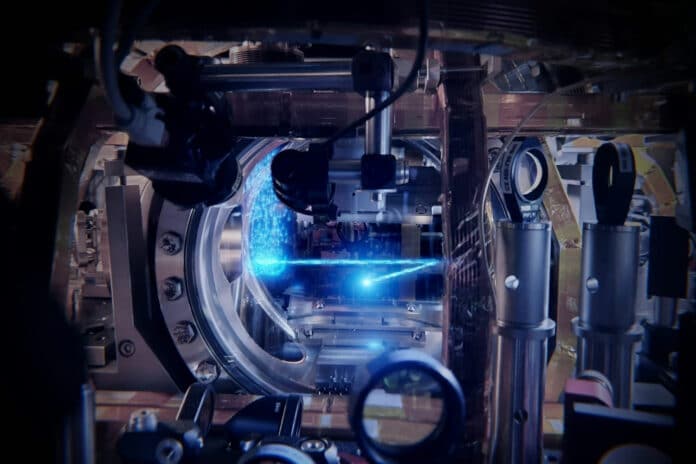Lasers are key components of many of the products that we use every day. We use lasers in printers, CD players, pointers, measuring devices, and so on. These lasers use coherent waves of light – all the light inside a laser vibrates completely in sync. Meanwhile, quantum mechanics tells us that particles like atoms should also be thought of as waves and that we can build ‘atom lasers’ containing coherent waves of matter that last so that they may be used in practical applications.
Now, a team of physicists from Amsterdam has managed to create a beam of atoms that behaves the same way as a laser, and that can theoretically stay on “forever.” At the root of the atom, the laser is a state of matter called a Bose-Einstein Condensate (BEC). It is created by cooling a cloud of bosons to just a fraction above absolute zero. Under such conditions, the atoms sink to their lowest possible energy state without stopping completely.
Reaching these low energies, the particles’ quantum properties can no longer interfere with each other; they move close enough to sort of overlap, resulting in a high-density cloud of atoms that behaves like one ‘super atom’ or matter-wave.
However, BECs are something of a paradox. They are very fragile and are rapidly destroyed when light falls on them. Yet the presence of light is crucial in forming the condensate: to cool a substance down to a millionth of a degree; one needs to cool down its atoms using laser light. As a result, BECs were restricted to fleeting bursts, with no way to sustain them coherently.
The University of Amsterdam physicists have now managed to solve the difficult problem of creating a continuous Bose-Einstein Condensate.
“In previous experiments, the gradual cooling of atoms was all done in one place,” explains Florian Schreck, the team leader. “In our setup, we decided to spread the cooling steps, not over time, but in space: we make the atoms move while they progress through consecutive cooling steps.”
“In the end, ultracold atoms arrive at the heart of the experiment, where they can be used to form coherent matter waves in a BEC. But while these atoms are being used, new atoms are already on their way to replenish the BEC. In this way, we can keep the process going – essentially forever.”
While the underlying idea was relatively simple, carrying it out was certainly not. “Already in 2012, the team – then still in Innsbruck – realized a technique that allowed a BEC to be protected from laser cooling light, enabling for the first time laser cooling all the way down to the degenerate state needed for coherent waves. While this was a critical first step towards the long-held challenge of constructing a continuous atom laser, it was also clear that a dedicated machine would be needed to take it further,” recalls Chun-Chia Chen, first author of the publication in Nature.
“On moving to Amsterdam in 2013, we began with a leap of faith, borrowed funds, an empty room, and a team entirely funded by personal grants. Six years later, in the early hours of Christmas morning in 2019, the experiment was finally on the verge of working. We had the idea of adding an extra laser beam to solve a last technical difficulty, and instantly every image we took showed a BEC, the first continuous-wave BEC.”
The researchers have now set their minds on the next goal – using the laser to create a stable output beam of matter. Once their lasers can not only operate forever but can also produce stable beams, nothing stands in the way of technical applications anymore, and matter lasers may start to play an equally important role in technology as ordinary lasers currently do.
